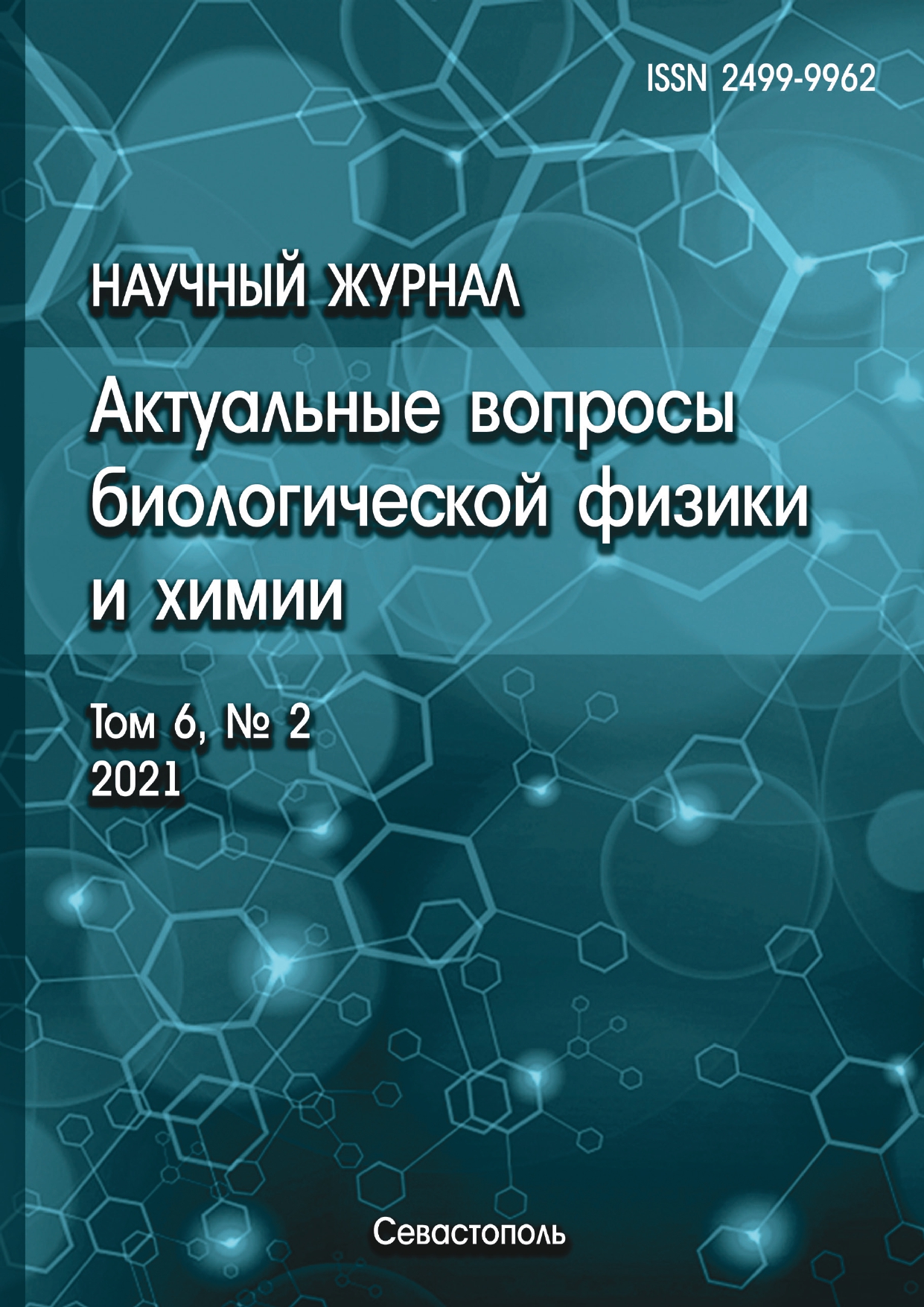Donetsk, Russian Federation
Donetsk, Russian Federation
Donetsk, Russian Federation
It was studied the possibility of using stable radicals to determine the content of phenols in the reaction mixture with redox titrimetric analysis. The procedure for obtaining an ABTS+•-radical in the laccase oxidation of ABTS has been developed. The subsequent isolation of the radical cation by gel chromatography on a column with Sephadex G-10 was applied. The extinction coefficient for the ABTS+•-radical was determined using various approaches and it was equaled (3.3±0.2)·104 L∙(mol∙cm)-1. Ascorbic acid has been proposed as a reagent for the solution of ABTS+•-radical and •DPPH standardization. Redox titration with ABTS+• and •DPPH might be used for recording the kinetics of consumption of polyphenol during its oxidation in the presence of the Trametes versicolor laccase.
stable radicals, laccase, phenols, ascorbic acid, oxidation, spectrophotometry, redox titration
1. Kulikova N.A. i dr. Ispol'zovanie bazidial'nyh gribov v tehnologiyah pererabotki i utilizacii tehnogennyh othodov: fundamental'nye i prikladnye aspekty (obzor). Prikladnaya biohimiya i mikrobiologiya, 2011, t. 47, s. 619-634. @@Kulikova N.A. et al. The use of basidiomycetes in technologies for processing and utilization of technogenic waste: fundamental and applied aspects (review). Applied Biochemistry and Microbiology, 2011, vol. 47, pp. 619-634. (In Russ.)
2. Veda P Pandey et al. A Comprehensive Review on Function and Application of Plant Peroxidases [Text]. Biochemistry and Analytical Biochemistry, 2017, vol. 6, no. 1, pp. 1-16. doi:https://doi.org/10.4172/2161-1009.1000308
3. Diana M. Mate, Alcalde M. Laccase: a multi-purpose biocatalyst at the forefront of biotechnology. Microbial Biotechnology, 2017, vol. 10, no. 6, pp. 1457-1467. doi:https://doi.org/10.1111/1751-7915.12422 EDN: https://elibrary.ru/YDJUGY
4. Santos-Sanchez N.F., Salas-Coronado R., Villanueva-Cañongo C., Hernández-Carlos B. Antioxidant Compounds and Their Antioxidant Mechanism.IntechOpen, 2019. doi:https://doi.org/10.5772/intechopen.85270
5. Roberta Re et al. Antioxidant Activity Applying an Improved ABTS Radical Cation Decolorization Assay. Free Radical Biology & Medicine, 1999, vol. 26, pp. 1231-1237.
6. Volkov V.A., Dorofeeva N.A., Pahomov P.M. Kineticheskiy metod analiza antiradikal'noy aktivnosti ekstraktov rasteniy. Himiko-farmacevticheskiy zhurnal, 2009, t. 43, № 6, c. 27-31. @@Volkov V.A., Dorofeeva N.A., Pakhomov P.M. Kinetic method for the analysis of antiradical activity of plant extracts. Pharmaceutical Chemistry Journal, 2009, vol. 43, no. 6, pp. 27-31. (In Russ.) doi:https://doi.org/10.30906/0023-1134-2009-43-6-27-31 EDN: https://elibrary.ru/TLRQLZ
7. Osman A.M., Wong K.K.Y., Fernyhough A. ABTS radical-driven oxidation of polyphenols: isolation and structural elucidation of covalent adducts. Biochem Biophys Res Commun., 2006, vol. 346, no. 1, pp. 321-329. doi:https://doi.org/10.1016/j.bbrc.2006.05.118 EDN: https://elibrary.ru/MLAGPZ
8. Shendrik A.N., Odaryuk I.D., Kanibolotska L.V. et al.Radical formation during phenol oxidation in aqueous media [Text].Int. J. Chem. Kinet., 2012, vol. 44, no. 6, pp. 414-422. doi:https://doi.org/10.1002/kin.20592 EDN: https://elibrary.ru/PLFXTB
9. Gramss G. Reappraising a Controversy: Formation and Role of the Azodication (ABTS2+) in the Laccase-ABTS Catalyzed Breakdown of Lignin. Fermentation, 2017, vol. 3, no. 27, pp. 1-18. doi:https://doi.org/10.3390/fermentation3020027 EDN: https://elibrary.ru/CTCEFR
10. Osman A.M. Multiple pathways of the reaction of 2,2-diphenyl-1-picrylhydrazyl radical (DPPH·) with (+)-catechin: evidence for the formation of a covalent adduct between DPPH·and the oxidized form of the polyphenol. Biochem Biophys Res Commun., 2011, vol. 412, pp. 473-478. doi:https://doi.org/10.1016/j.bbrc. 2011.07.123 DOI: https://doi.org/10.1016/j.bbrc.2011.07.123; EDN: https://elibrary.ru/XZEXXT
11. Doson R. i dr. Spravochnik biohimika: Per. s angl. M.: Mir, 1991, 544 s. @@Dawson R. et al. Biochemist's Handbook: Per. from English M.: Mir, 1991, 544 p. (In Russ.)
12. Branchi B., Galli C., Gentili P. Kinetics of oxidation of benzyl alcohols by the dication and radical cation of ABTS.Comparison with laccase-ABTS oxidations: an apparent paradox. Org. Biomol. Chem., 2005, vol. 3, pp. 2604-2614. doi:https://doi.org/10.1039/B504199F










